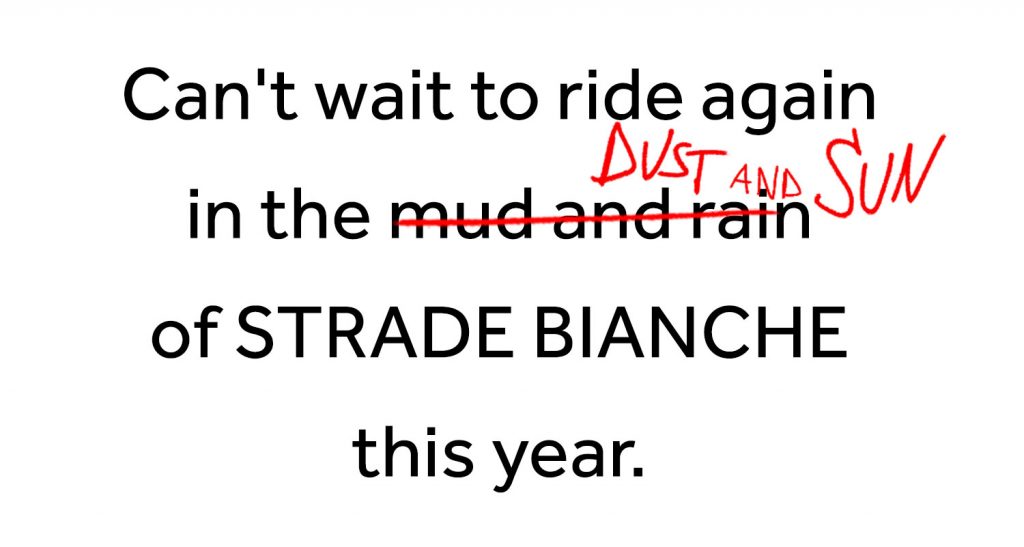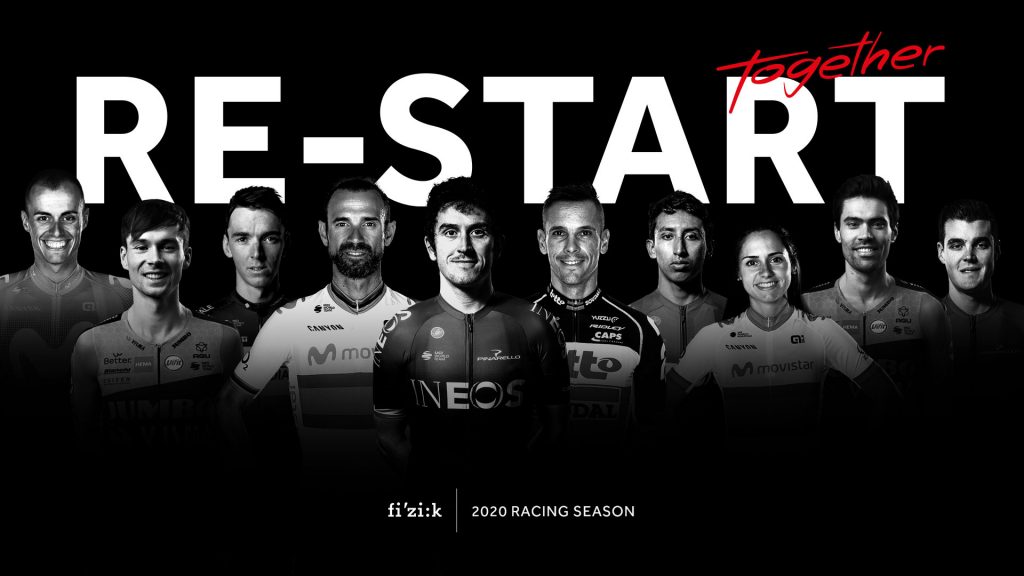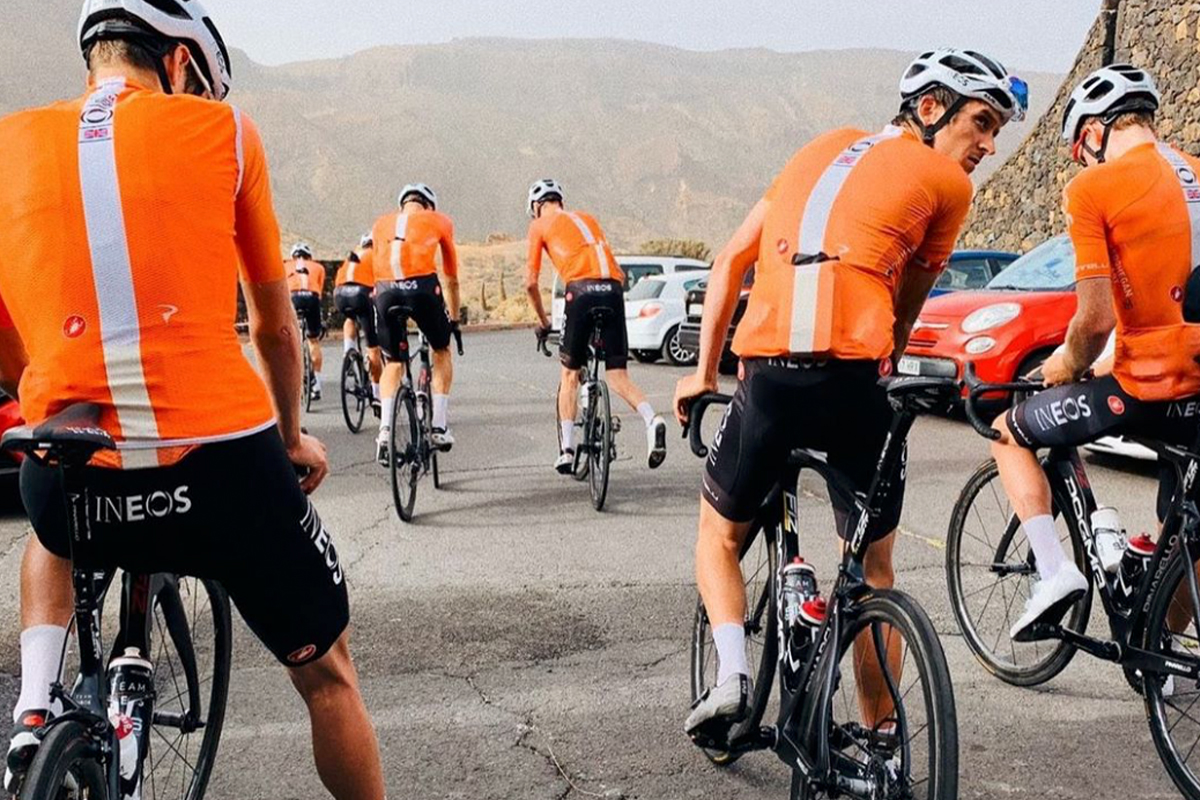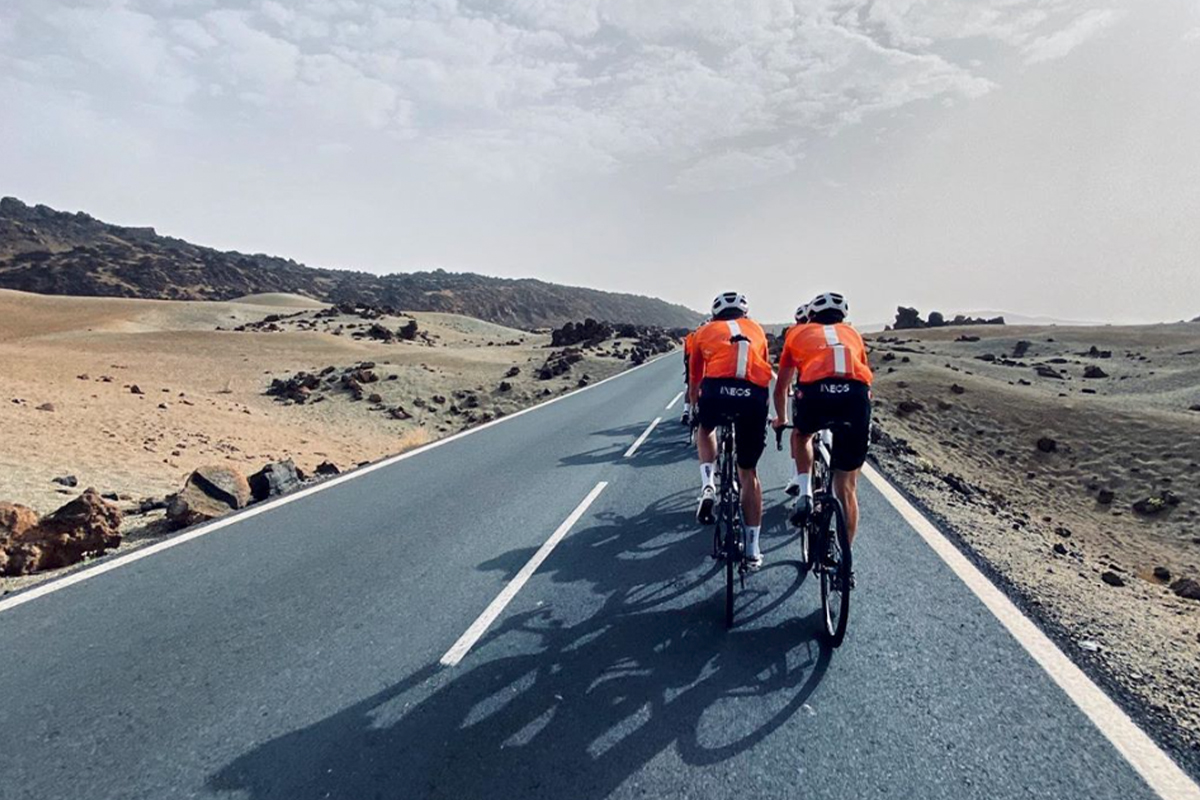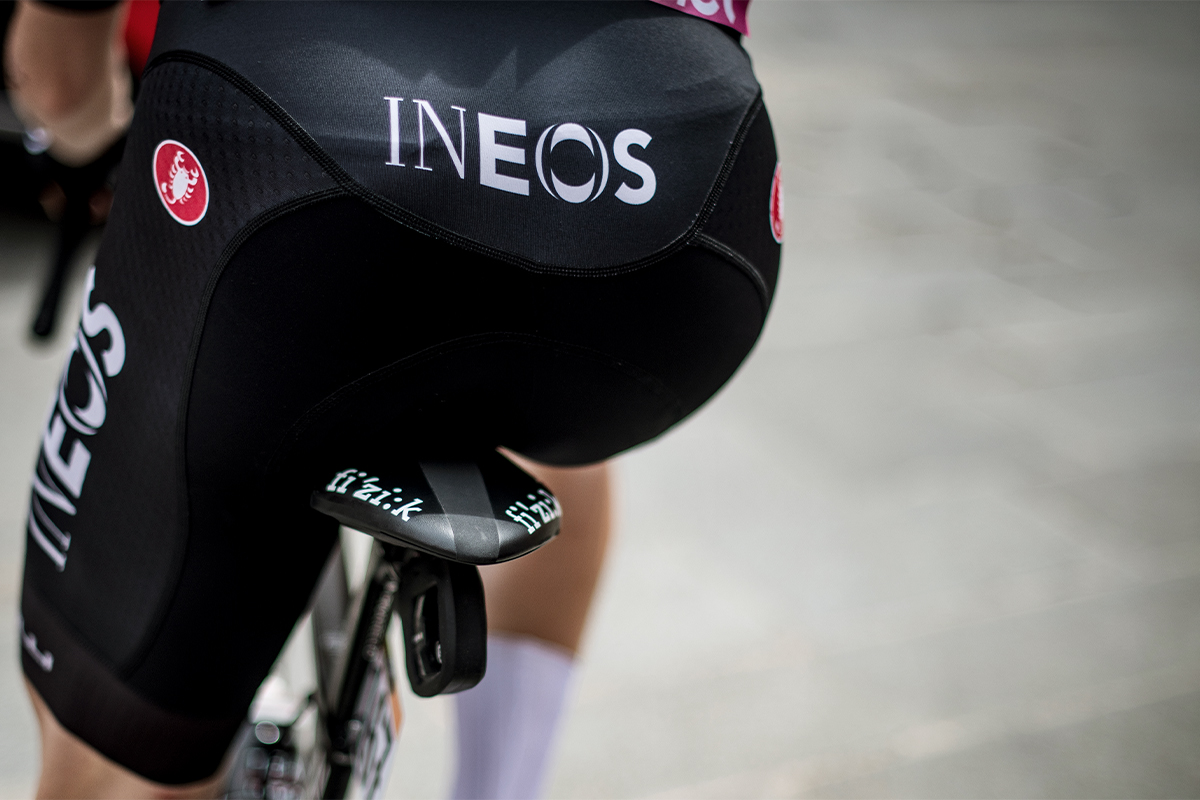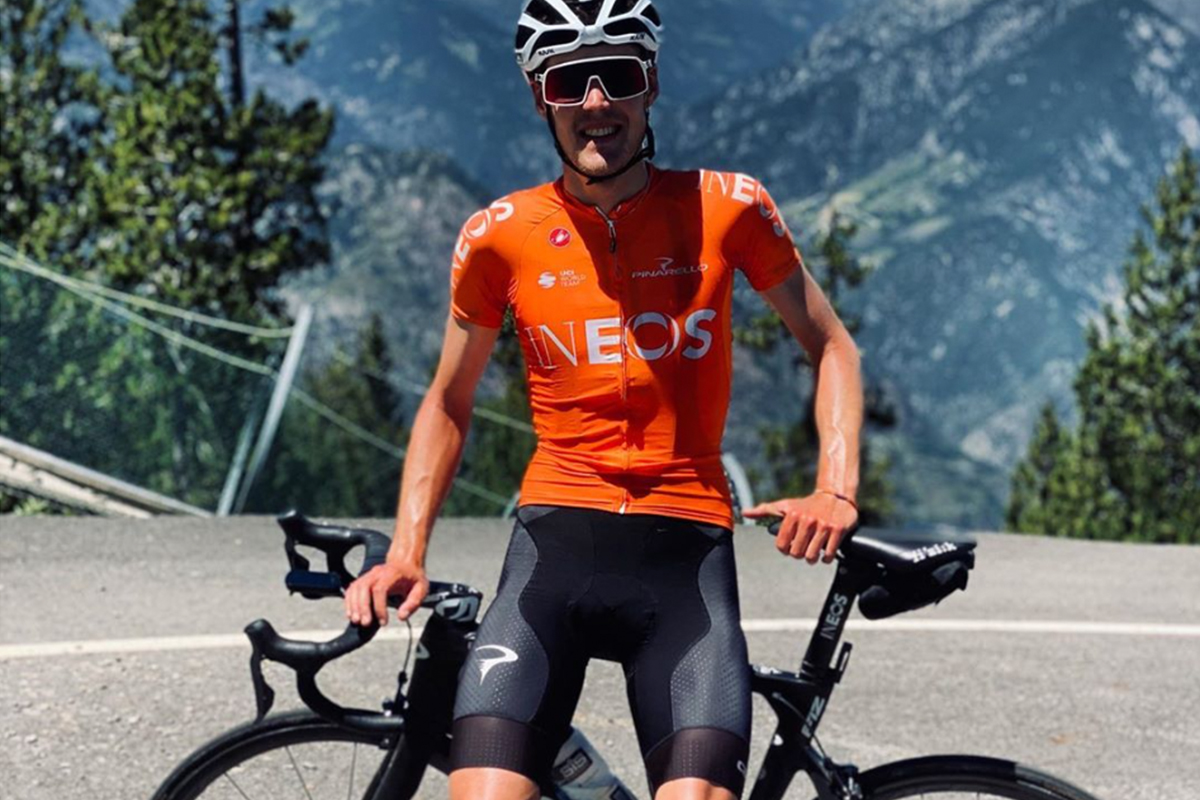The Enduro World Series is getting supercharged with the introduction of the first ever EWS-E. Following a successful start at the inaugural race, held in the shadow of the iconic Matterhorn in Zermatt, Switzerland late last month, we wanted to take a closer look at this exciting evolution in e-bike racing as well as a top-secret product in the fizik pipeline making its debut in this new competitive field.
As advancements in e-MTB tech continue to propel the sport forward, the scale and caliber of competition likewise grow, and it was only a matter of time before e-bikes found their home in the dynamic world of enduro. With the discipline’s fast-paced, timed downhill segments interspersed amongst non-competitive, yet mandatory, transfer stages, enduro rewards technical skill over sheer fitness, making it perfectly suited for e-MTB. Now, after several years of careful planning and refinement to the race format, 2020 marks the kick-off of the first-ever Enduro World Series-E calendar, with three major events in Switzerland, Italy and France.

To those familiar with the Enduro World Series, the format will look familiar with several new rules and changes. Races consist of both competitive timed segments, known as special stages, and untimed transfers, or liaisons. Different than typical enduro racing, e-enduro transfer segments have much shorter cut-off deadlines, and riders who arrive late to the start of the next special stage get penalized. This subtle shift brings more of the day’s riding into the overall racing strategy and competition. Another big change is the introduction of the Power Stage, an up-hill battle for bonus points guaranteed to push riders and their bikes to the limit.
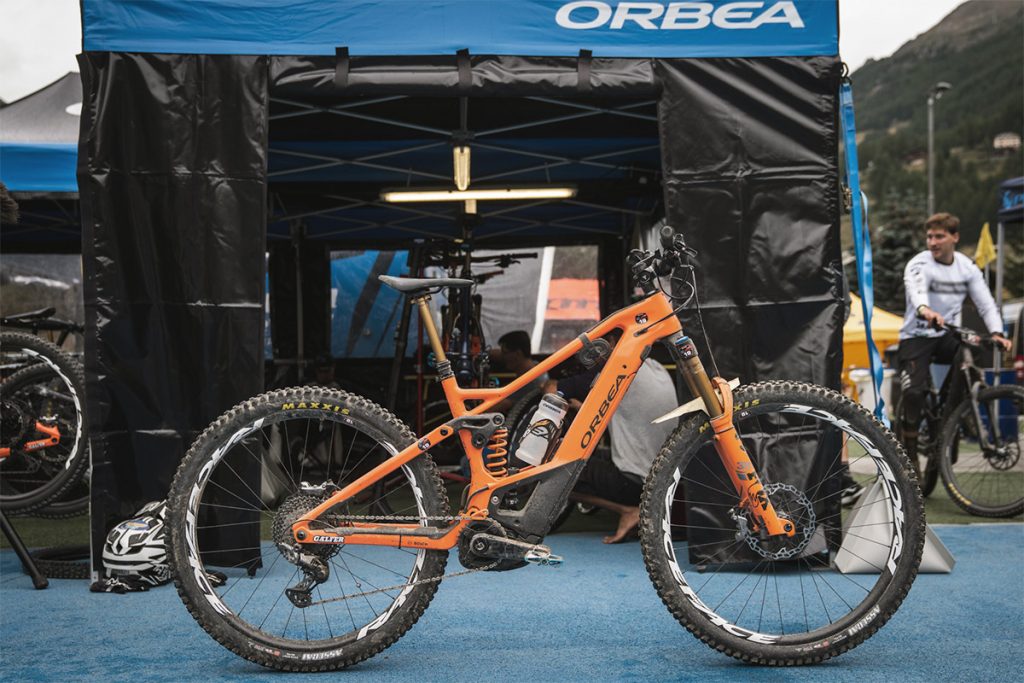
To learn more about the electrifying world of e-enduro, we spoke with prospective racer and three-time Vice Enduro World Champion Damien Oton. And while Covid precautions have kept him out of this year’s competitions, it hasn’t dampened his enthusiasm or slowed his training as he prepares for the exciting future of e-enduro.
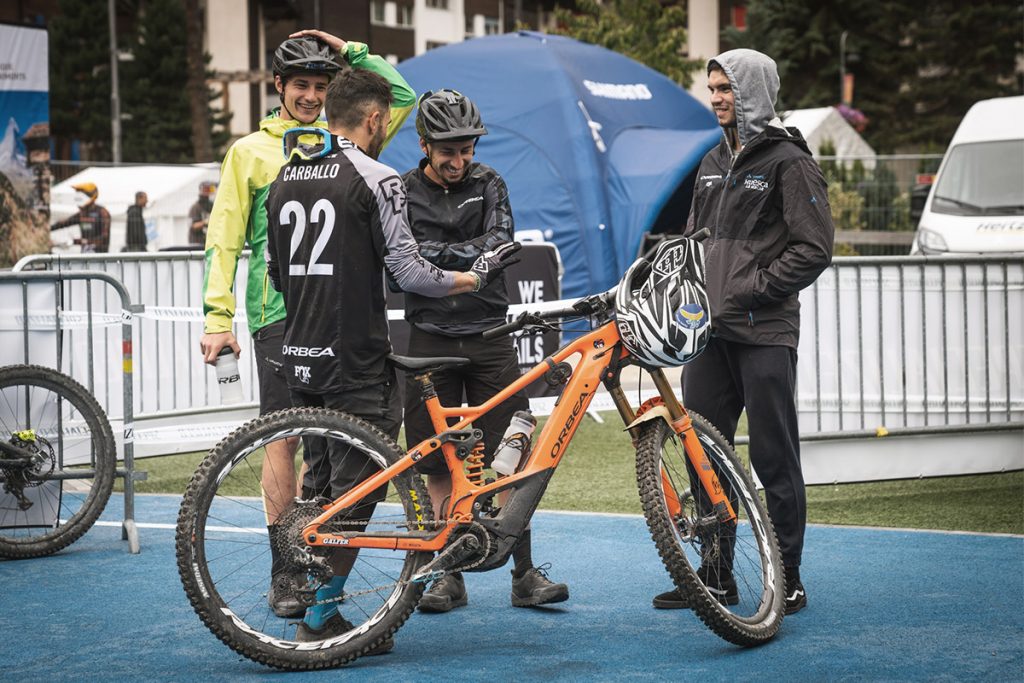
What motivates you to join this new world of e-enduro racing?
It’s a new challenge for me, so it’s really exciting. I come from an Enduro Moto background, so it reminds me so much of when I was racing moto. I honestly think that it is going to be really hard physically because of the short transition times and the uphill Power Stage.
What do you think are some of the biggest changes between e-enduro and more traditional racing? What challenges are you anticipating?
The first big change is the Power Stage. It requires climbing very technical sections that you can only climb on an e-bike. Also, the liaisons between the special stages are really short. There’s no time to chill, so that means that when you leave the paddock, you have to be ready.
Some people think that e-racing is easier than racing on a normal bike, but to me, it’s definitely harder. The engine is restricted to 25 kph, so after that, you have to pedal a 23-kilogram bike which is really, really hard. The approach to racing must be totally different on e-bikes, for sure.
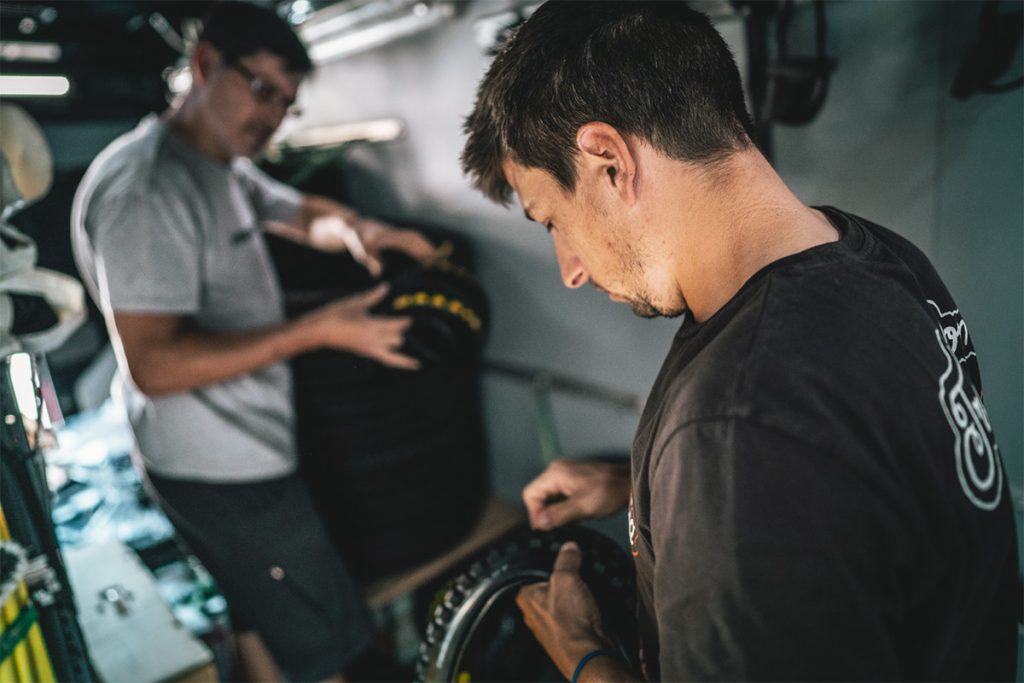
As a sport that’s fueled by innovation, careful consideration must go into equipment choice. You’ve been training on a soon-to-be-released fizik saddle. Can you tell us about your experience so far?
This new saddle is made for e-bikes, so there are many great advantages. For example, you can easily grab the back of your saddle to pull up and maneuver your bike comfortably. You can also easily shift and adjust when on the saddle to get more grip on steep climbs. And the shape of the saddle gives great body support on technical climbs, meaning you can put less effort on your arms when holding the handlebars.
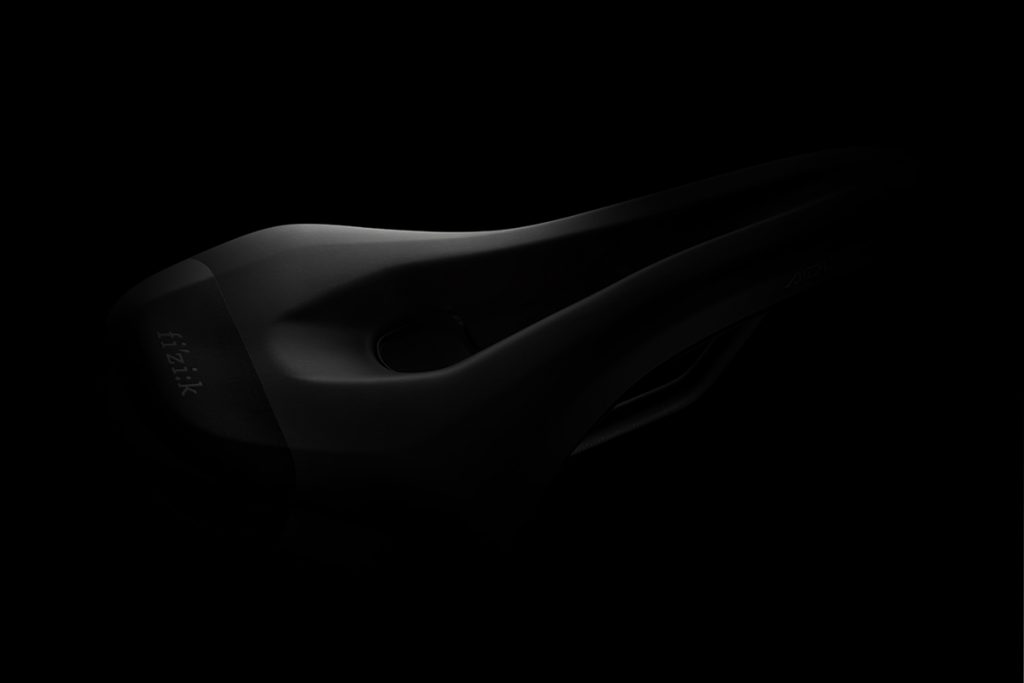
What do you look for when choosing an e-racing saddle?
First, I need a strong saddle because e-bikes are heavier than normal bikes. If you crash, you need something strong. Also, on e-bikes, you spend more time seated than on traditional mountain bikes, so comfort is really important. Of course, when you are racing, you’re always looking at weight, so it’s really interesting to have carbon rails.
What are you looking forward to when the time comes to join your first e-enduro race?
As you know, with this Covid situation, we are not racing that much this year. But when I have a race, I’ll be more than happy to go and give my best to try to grab a win.
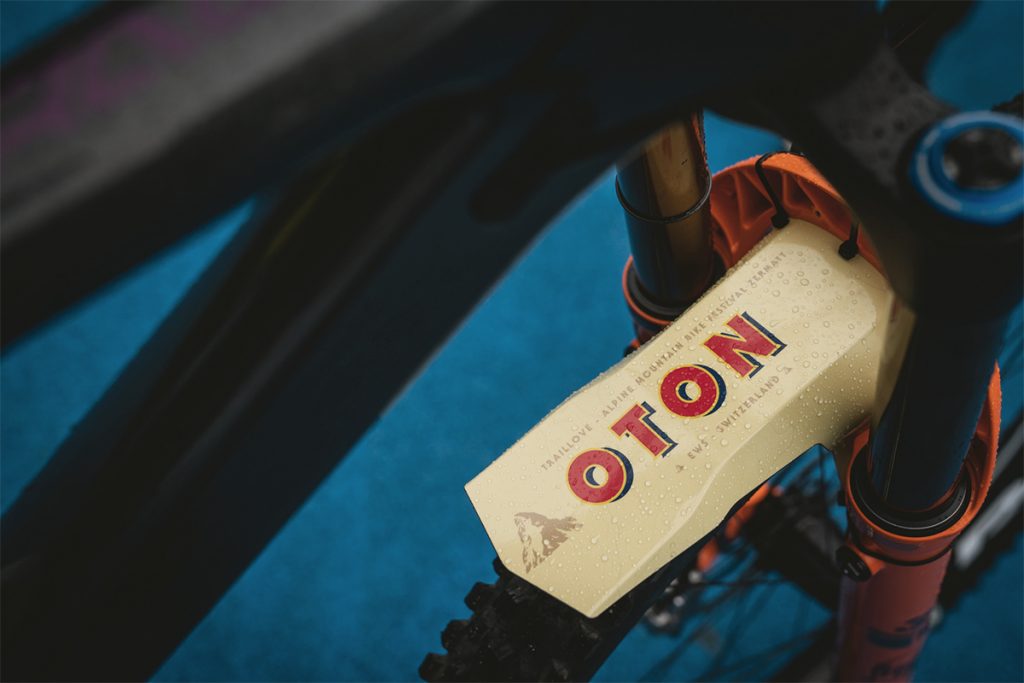
The next event in the EWS-E calendar is scheduled for September 25th in Finale Ligure, Italy. Follow along with the powerful field of competitors and stay tuned for when Damien Oton makes his e-racing debut in the 2021 season.
Uncover the mystery behind Damien’s powerful performance as we unveil our latest innovation for the world of e-racing, coming soon.
As part of our new Phil Burt Tutorial Series, we are joined by leading Physiotherapist and bike fit expert, Phil Burt, to examine the differences in saddle design and how that applies to finding the right fit. In this first instalment, Phil compares the varying saddle surfaces to help riders make more informed saddle choices to match both their body type and riding style.
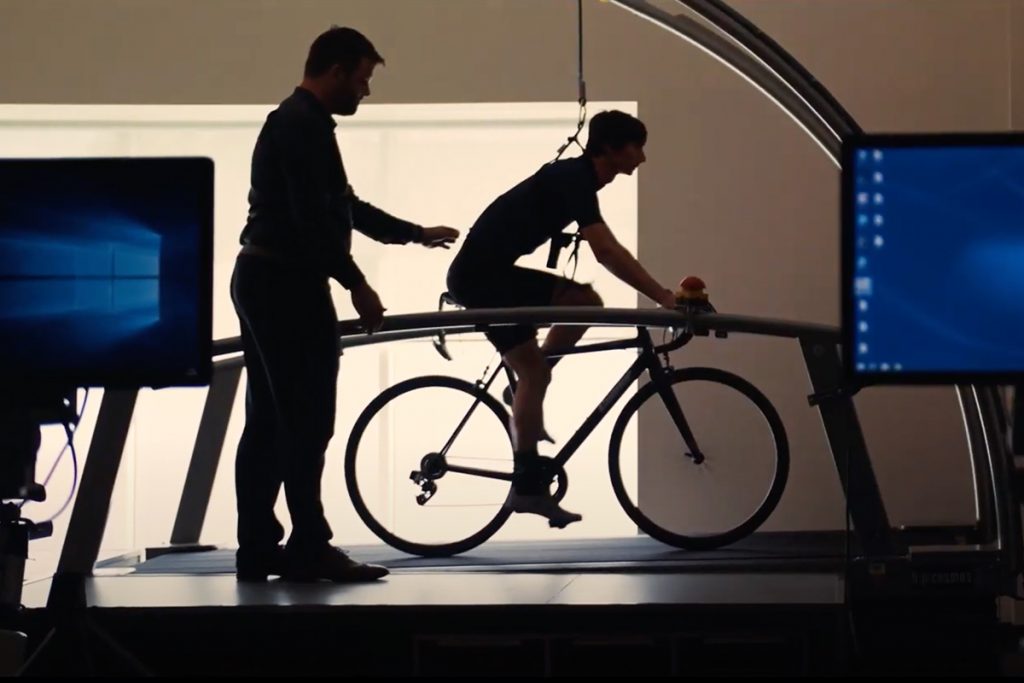
Looking across the spectrum of cyclists and the various disciplines they pursue, it’s evident that no two cyclists are exactly alike. Cycling is, for the most part, an individual sport after all, which makes personalized performance important and finding the right equipment crucial. There’s no one-type-fits-all approach when it comes to comfort, and nowhere is the relationship between riders and their bikes more delicately balanced than at the saddle.
Fortunately, saddle design has evolved considerably over the years with the modern market providing more choice than ever before—which can make making the right choice challenging. To better understand the available options as well as the potential benefits of each, we’ll start at the top by looking closely at the three most popular saddle surface shapes: Solid, Cut-Out and Channelled.
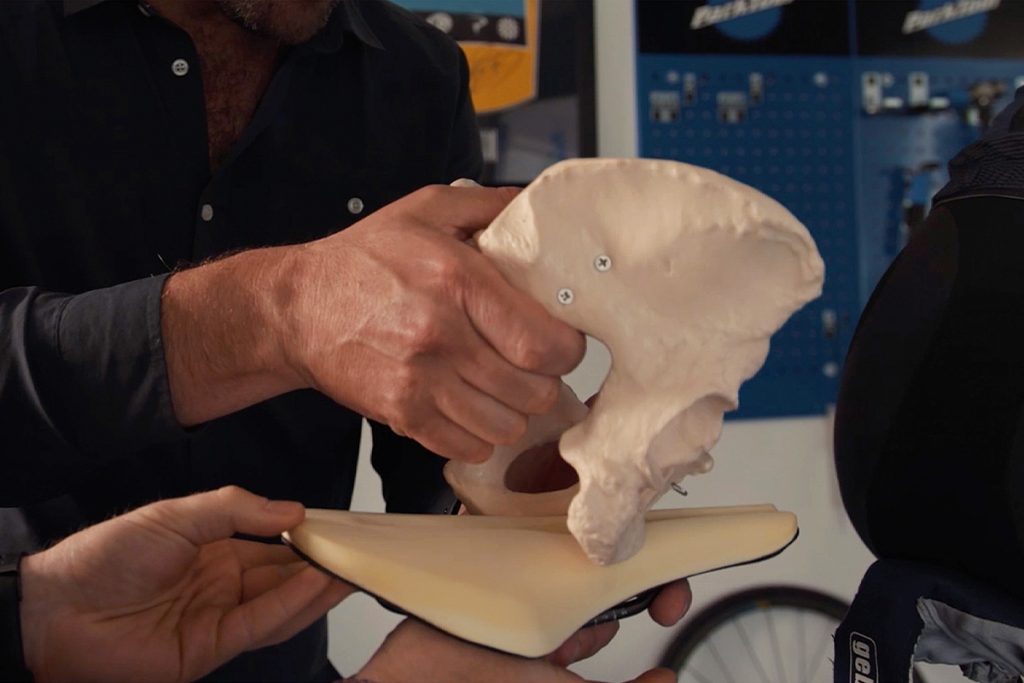
SOLID SADDLES
As the name suggests, with Solid Saddles, the entire surface is uninterrupted, smooth and solid, though specific widths, lengths and fore-to-aft profiles may vary between models. Solid saddles are ideal for riders seeking a more traditional fit, those who find comfort in greater connection and individuals who adopt a more upright riding posture. Solid saddle options in the fizik family include the Arione R3 and the Antares R1, amongst others.
CUT-OUT SADDLES
For some riders, especially those favouring the forward, aero riding position, long hours on traditional solid saddles can lead to discomfort and numbness due to unwanted pressure placed on sensitive tissues. With Cut-Out Saddles, the centre of the seat is removed to provide relief without sacrificing strength or sit-bone support. Specific cut-out models include the Tempo Argo R1 and R3 as well as Luce models and all our Open saddles.
CHANNELLED SADDLES
The latest step forward in saddle surface design is Channelled Saddles. Similar to Cut-Out Saddles, Channelled Saddles aim to avoid unpleasant pressure. Yet instead of a single removed section, Channelled Saddles feature raised padding, supporting the sit bones on either side of a central relief that runs the entire length of the saddle’s surface. The advantage of Channelled Saddles is that they allow riders to sit anywhere on the saddle, from nose to tail, while still being perfectly positioned and pressure free. For cyclists seeking comfort and front-to-back freedom of movement, the Adaptive line of saddles and Antares R1 Versus Evo are amongst our many Channelled options.
Phil Burt further explains the subtleties of saddle surface design in the following video:
For more than half a century, riders have gathered to race from coast to coast across southern Italy in the early season stages of Tirreno-Adriatico. Known as the Race of the Two Seas, Tirreno-Adriatico’s typical March positioning has long made it more than just another exciting stage race, but a crucial warm-up to the season’s looming challenges, such as the lengthy Milano-Sanremo traditionally held the week after Tirreno. Of course, nothing about this cycling season has been typical. Instead of leading into an exhilarating season, Tirreno-Adriatico is setting off right in the middle of one, overlapping with the TDF and following Milano-Sanremo for the first time in its fifty-five-year history. But even though the field and season may differ this year, enthusiasm remains as high as ever as riders wrestle with the always-challenging Italian terrain – a generous mix of ups, downs and flat out sprints – in a quest to claim the Golden Trident. Follow along as competition intensifies from sea to sea in this year’s Tirreno-Adriatico.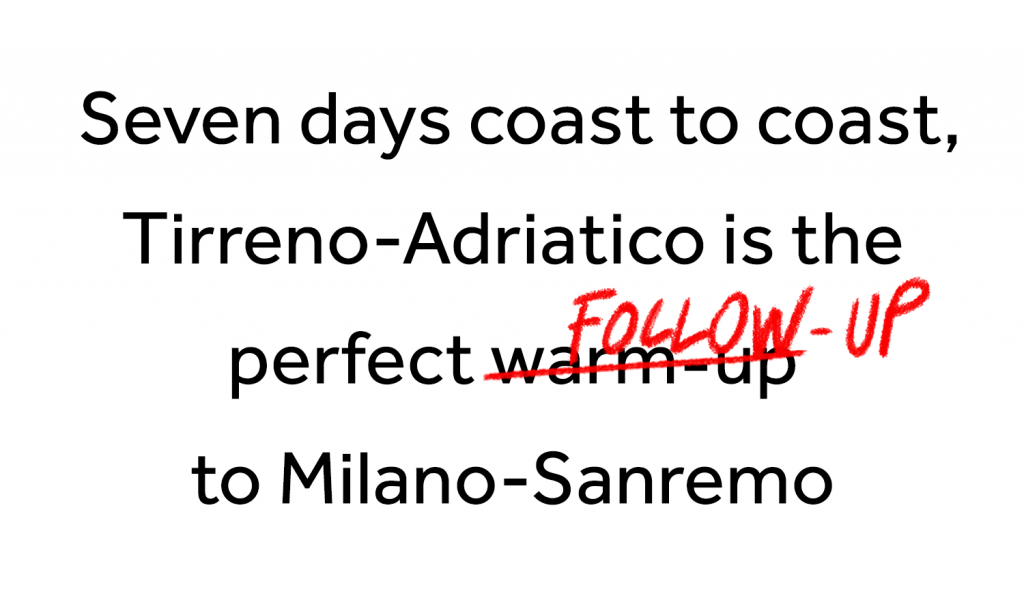
The epitome of competitive cycling, the Tour de France marks the high point of the World Tour every summer for pro riders and fans alike. Rivalries heat up throughout July as teams battle it out to see which rider will end up in the yellow jersey along the Champs-Élysées. Most years, that is. For the first time in its history, the Tour de France didn’t take place in July, at least not on actual roads. While select riders curbed their competitive cravings online in the Virtual Tour de France, the majority of challengers and fans spent the first summer of their lifetimes nervously waiting on when La Grand Boucle would happen, if at all. While the riders didn’t line up in July, the Tour de France luckily wasn’t cancelled, only postponed, and will be kicking off tomorrow with September taking the main honours as the month with some of the steepest competition (and climbs) of the pro tour calendar. So join us this July September when rivalry returns to French roads as riders once again undertake the long, difficult and beautiful journey to Paris.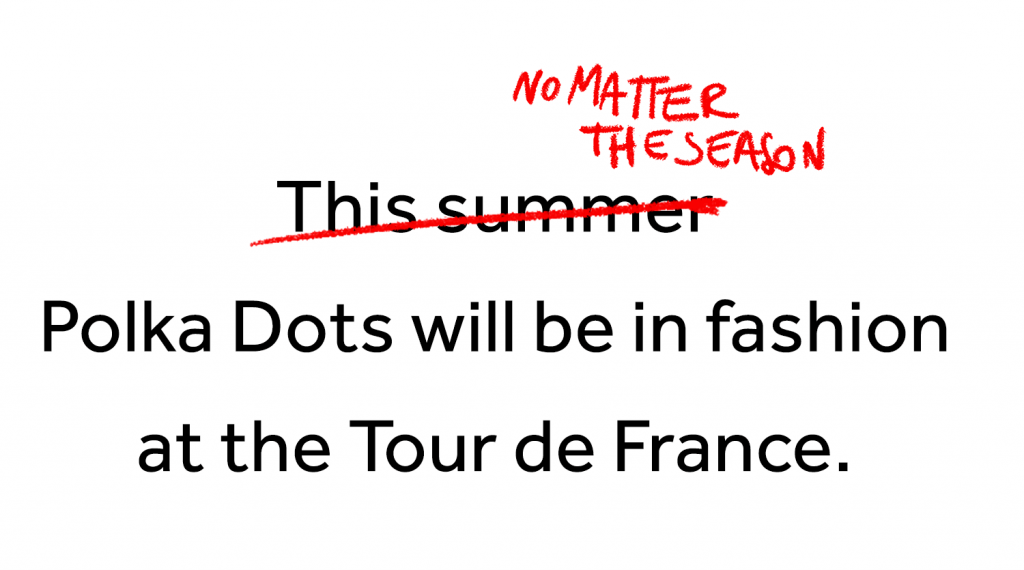
As riders cross the finish line every year in Lombardy, they do so following an exciting and exhausting season of racing. Nicknamed the “Classica delle foglie morte” or “the Classic of the falling leaves,” Il Lombardia’s typical October schedule places it as each year’s final Monument and as one of the last legs on the UCI competitive calendar. But of course, 2020 has been anything but typical. As the third race in the postponed World Tour season, this year’s Il Lombardia will be a celebration of the start of racing instead of the end. Combining elevation with distance, the Giro di Lombardia as it’s also known, favours climbers as riders jockey for position over a very hilly 240 km course between Bergamo and Como. Yet instead of its usual victory-lap vibes, the 2020 race will give riders the unique opportunity to grab a big win early. For only the third time in this Autumn Classic’s illustrious 114-year history, the Tour of Lombardy will not be held as regularly scheduled. But change, even with a Classic, provides an exciting new perspective on the familiarity of one of cycling’s most storied and anticipated races.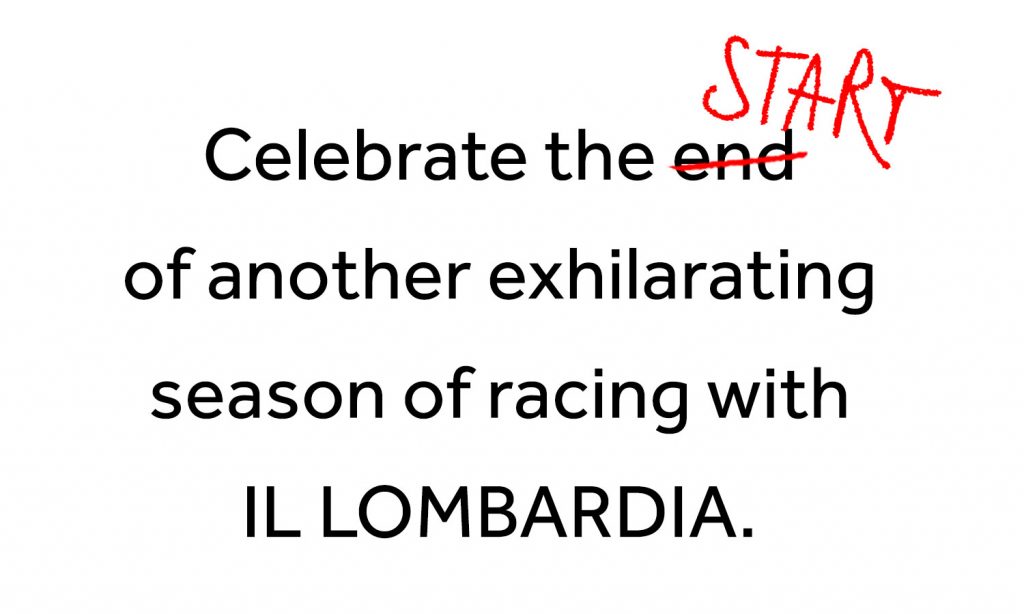
It goes by many names: Milano-Sanremo, The Spring Classic, La Classicissima, but one thing about this monumental race is certain – at nearly 300 kilometres long, Milan-Sanremo is a seriously long day in the saddle. As the lengthiest stage on the UCI calendar, La Classicissima was first held in 1907 and has seen racers battle it out in a test of endurance between Milan and Sanremo every year since. As its nickname suggests, The Spring Classic presents an early season challenge to riders as they set off each March to the Northern Italian coast—most seasons, that is. For 2020, following a several month delay, Milan-Sanremo will be held in August as opposed to March as the longest Monument becomes a Summer, instead of Spring, Classic. Due to local restrictions, the route differs, too, as do team sizes—reduced from seven riders down to six. Warmer weather, smaller teams and an inland route with bigger climbs all combine to give the 111th edition of this classic race an exciting new atmosphere. Line up Saturday August 8th for a full day in the saddle with the longest Summer Classic.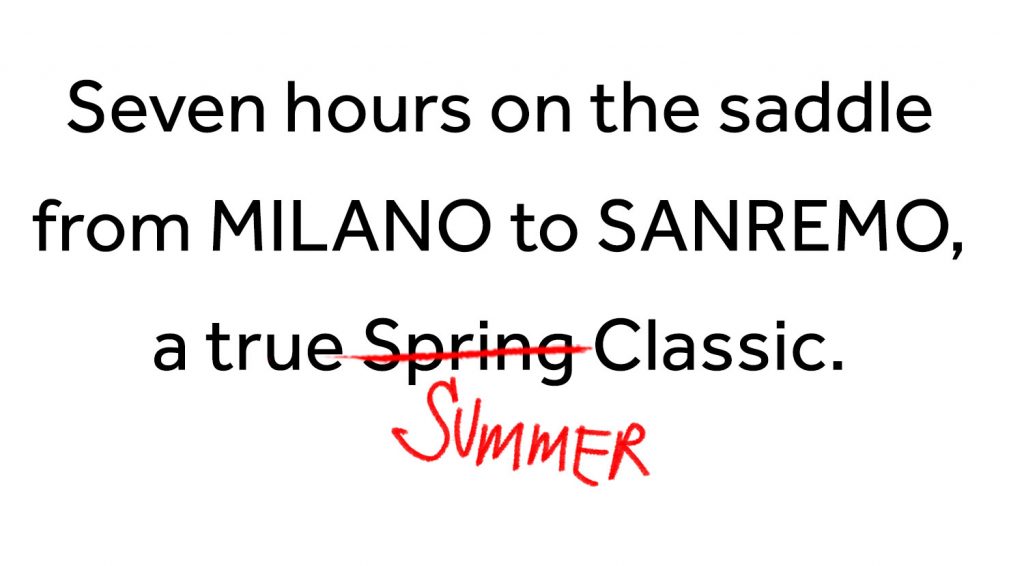
In celebration of the launch of our latest Movistar Team edition road racing shoe, the Vento Powerstrap R2 Aeroweave, we take a look back at our previous collaborations with one of the UCI World Tour’s most successful racing teams and ask team riders what they look for in a performance racing shoe and what they’re looking forward to as the 2020 season gets underway. Following the delayed kick-off of the 2020 racing calendar, Movistar Team are back in familiar territory as riders continue the team’s four-decade tradition, having just taken to the starting line at Strade Bianche. As they do so, riders like Gabriel Cullaigh, Juri Hollmann, Marc Soler and others share more than just team colours in common: they all ride in the latest Movistar edition fizik racing shoe: The Movistar Team Vento Powerstrap R2 Aeroweave. New in bold Movistar blue, the Vento Powertrap R2 Aeroweave is a lightweight, highly ventilated performance road racing shoe built around our stiffest R2 outsole. The Vento Powerstrap R2 delivers immediate energy transfer from the leg to the pedals, just what’s needed for intense sprints across the finish. The woven wonder of Aeroweave interlaces nylon fibres with filaments of thermoplastic polymer to combine breathability with weight saving construction for unrivalled race day functionality, while the Powerstrap rounds out performance for a perfect, secure fit every time. Yet a shoe this powerful doesn’t happen by chance. It comes as the next step in an ongoing relationship with some of cycling’s strongest riders and follows prior tour-leading collaborations with the Movistar team, such as the Infinito R1 Knit and the Vento Powerstrap R1 as well as the Infinito R1 Movistar team-edition shoe, which won last year‘s Giro D’italia and Spanish Championship. With their class-leading comfort and performance, it’s no wonder that these fizik shoes can still be found on the feet of top team riders today. Choosing the right shoe to take to the highest levels of cycling competition is a serious choice, and a deeply personal one. That’s why with the latest Movistar Vento Powerstrap R2 Aeroweave, as with all our previous team shoes and entire Vento range, we combined the knowledge and expertise of fizik with the desires and demands of the pros that wear them. Sharing what brought them to the new R2, riders let us in on what they look for in a racing shoe, as well as what they are looking forward to during this season’s races. As Movistar Team rider Marc Soler describes the new racing shoes, “Since I first tried the Aeroweaves, I have had a new favourite pair of shoes for the summer. Breathable and very light, they allow my foot not to suffer too much from the heat.” Elaborating on what drew him to the new R2, he adds, “In a shoe I look for comfort and performance, a shoe that allows me to be able to express myself both uphill and in the sprint. And the carbon sole of these new shoes is perfect. Moreover, the strap is rigid and does not yield. Therefore, it’s perfect for sprint arrivals. As always, fizik manages to reconcile aesthetics and performance.” As a new recruit to Movistar, Enric Mas has had an unusual first season with the team. When asked what he is most looking forward to as racing restarts, he shared his thoughts: “It’s my first season with Movistar, and I never thought it would take so long to arrive. I am very motivated, and I can’t wait to race the great Summer Classics. The season is starting again in a very different, more controlled way. But I’ve never been so happy to start over.” As for experienced team leader and current Spanish Road Champion, Alejandro Valverde, even with a condensed calendar, he’s staying focused on the road to victory. “I am looking forward to running again. After so many weeks away from racing, I have the right motivation to return to racing at my best. A special eye for me always goes to the Tour and also to the World Championship. A bit like two years ago, I really like the path. I want to fully enjoy these three months of racing.” As racing returns with riders in top shape and equipment dialled to meet the season’s demands, we invite you to join Movistar Team in their pursuit of victory with the Vento Powerstrap R2 Aeroweave racing shoe—available exclusively at fizik.com. Credits: Bagan Fotografia As one of the UCI calendar’s youngest (and most scenic) races, the Strade Bianche holds a special place in the hearts of riders and fans alike for its stunning setting, winding riders over the picturesque hills of the Tuscan countryside and the unique challenges presented by the white Italian gravel roads. In the same way that riders face off against both competition and course in the northern Cobbled Classics, loose gravel plays the role of equalizer on the Strade Bianche. Typically held in March, this year’s Strade Bianche became the first major race to fall to a string of postponements as organisers smartly prioritised safety and moved this southern spring classic to the end of summer. That means instead of the usual cool temperatures and frequent rain and mud present on the course, riders will take on the Strade beneath a Tuscan summer sun, adding fire to the heat of competition and offering a new and exciting twist to one of the year’s most uniquely beautiful races. Join us as we RE-START racing in Siena this Saturday in what promises to be an exhilarating return to the sport! With the beginning of each new race season, riders and fans unite in anticipation of the history-making moments that lie just beyond the starting line. Join us as we kick off a unique cycling calendar that’s already one for the books, and share in the excitement as the competition heats up as the weather cools down. Join us, along with the riders, teams and supporters of the Pro Tour as we RE-START racing together. Now is a strange time to be a professional cyclist, and the 2020 Season will go down in history as one of the most notable. For a sport that is all about discipline, trading the regular Grand Tour schedule for a training camp presents its own set of challenges, and the riders at Team INEOS have been spending their summer preparing for a delayed racing season, slated to start next month. For final tune-ups to the team’s high-altitude fitness, most members of the prospective INEOS Tour de France squad have assembled on the Spanish island of Tenerife, part of the Canary Islands and home to, at 3,718 metres, the formidable Mount Teide. On Tenerife, Russian rider Pavel Sivakov, one of the youngest members of Team INEOS, is readying himself to join the peloton again this fall. Pavel took some time out of his recovery to take us through a typical day of training camp, giving us a sneak peek at how top Tour teams prepare for cycling’s most competitive stages. Pavel’s Camp Diary At the moment, we are preparing for the upcoming season by riding on Mount Teide on Tenerife, which is one of the Canary Islands. The team has been coming here for years to prepare for some of the bigger races of the season. A typical day at training camp is pretty simple. Of course, it varies a little bit for the routines of each rider, but the schedule is quite similar for everyone. I usually wake up around 7:00; then I have breakfast at 7:30. We’re lucky to have one of our chefs, Jon, at camp, so the food is excellent. The menus are always different and healthy. Our training rides don’t usually rides start until 9:30 but I go for some sort of activation core/mobility session forty-five minutes prior to heading out on the bike. The duration of our rides can be anywhere from four up to six-and-a-half hours, depending on the session we have planned for that particular day. On these days our partnership with fizik really comes in to its own. I ride a handmade Fizik Arione R1 Solid. It’s nice and stiff and distributes my body weight evenly for good power transfer. An effort session is shorter as the intensity is much higher while a general steady ride is longer since we’re riding at a nice, steady pace throughout the day. Since we are staying at altitude, and because of the terrain of the island, we don’t have any choice other than to get plenty of climbing in every day. That’s what we are here for, after all! We come back in the afternoon sometime around 16:00, and I then go straight for a shower. Our recovery is straight forward, we make sure that we refill our glycogen levels and repair the muscle damage immediately after each ride by having a recovery shake and a good high-carb meal. After that, we always get a massage, which is probably one of the nicest moments of the day! As you can see above our focus is our training and thankfully, we a mechanic here who takes care of everything like they would if we were racing. All we have to do is to put on our kits and push the pedals which frees up our evenings. I like to me time to relax, watch some movies, listen to podcasts or music, or chat with friends and family. Luke Rowe brought a poker set with him this year, so if we have the opportunity, we’ll probably get everyone playing and have a laugh together. You can follow Pavel’s training camp progress during his Instagram takeover at fizik Instagram profile and catch him and all the riders of Team INEOS at the Tour de France start in Nice at the end of next month. –






